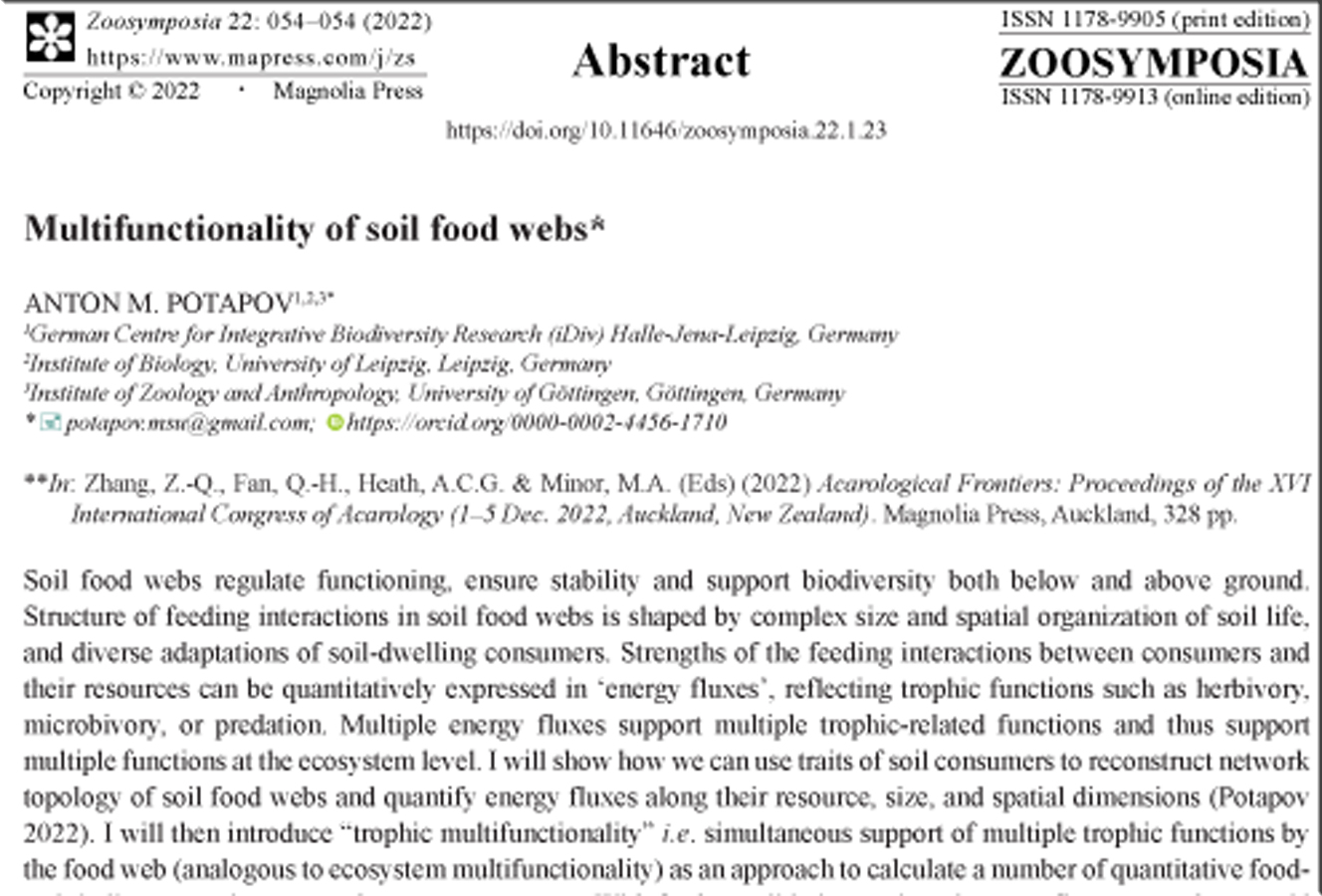Abstract
Soil food webs regulate functioning, ensure stability and support biodiversity both below and above ground. Structure of feeding interactions in soil food webs is shaped by complex size and spatial organization of soil life, and diverse adaptations of soil-dwelling consumers. Strengths of the feeding interactions between consumers and their resources can be quantitatively expressed in ‘energy fluxes’, reflecting trophic functions such as herbivory, microbivory, or predation. Multiple energy fluxes support multiple trophic-related functions and thus support multiple functions at the ecosystem level. I will show how we can use traits of soil consumers to reconstruct network topology of soil food webs and quantify energy fluxes along their resource, size, and spatial dimensions (Potapov 2022). I will then introduce “trophic multifunctionality” i.e. simultaneous support of multiple trophic functions by the food web (analogous to ecosystem multifunctionality) as an approach to calculate a number of quantitative food-web indicators and compare them across systems. With further validation, trait and energy flux approaches would allow to embrace functioning of soil communities from microorganisms to large animals and in perspective use this knowledge to actively manage soil functioning.
References
Potapov, A.M. (2022) Multifunctionality of belowground food webs: resource, size and spatial energy channels. Biological Reviews, 97 (4), 1691–1711. https://doi.org/10.1111/brv.12857


